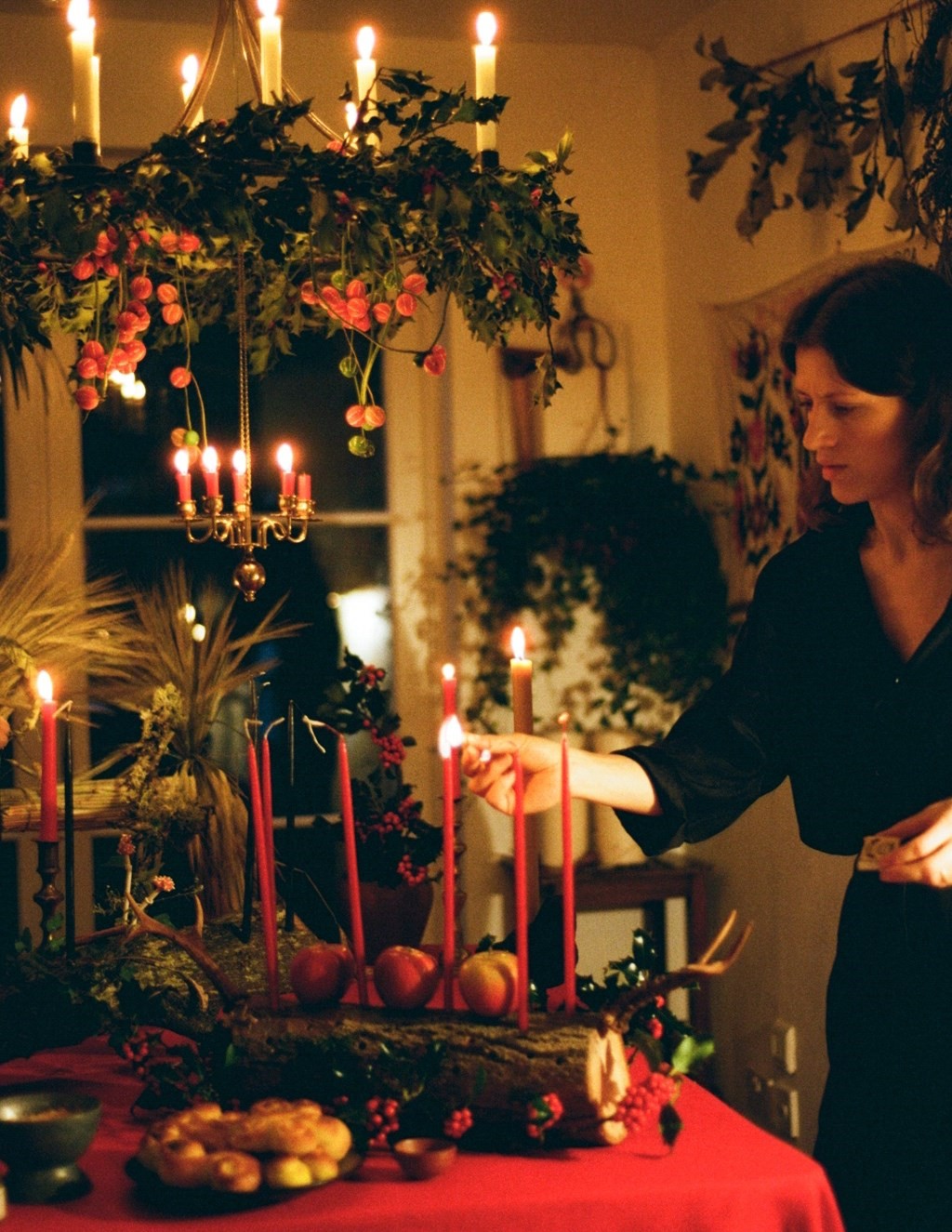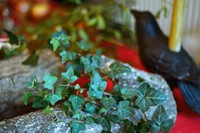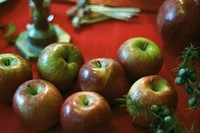As the end of the calendar year approaches – a time that has become synonymous with consumerism and gluttony – there’s a pleasure to be found in taking an hour or two away for quieter pursuits. And the winter solstice, which occurs on the shortest day of the year, or midwinter, presents a prime opportunity. You could be forgiven if the words yule log conjure an image of a naff dessert found in the freezer department at a budget supermarket. In fact, it is an ancient folk tradition whose exact origin is unclear; the log is created and then burnt ritualistically over the course of 12 days, in order to cleanse the house of sins and celebrate the progressive lengthening of days in the lead up to the ensuing summer.
“What is a Yule Log, and how do I make one?” you ask. Who better than to talk us through the process than fascinating set designer Janina Pedan? “My discovery of the Yule Log came about last year,” says Pedan, "and since then I’ve been fascinated by it. You create it, and then you burn it.” So here, on the occasion of the winter solstice 2017, is a guide to making your own yule log, as demonstrated by Pedan herself.
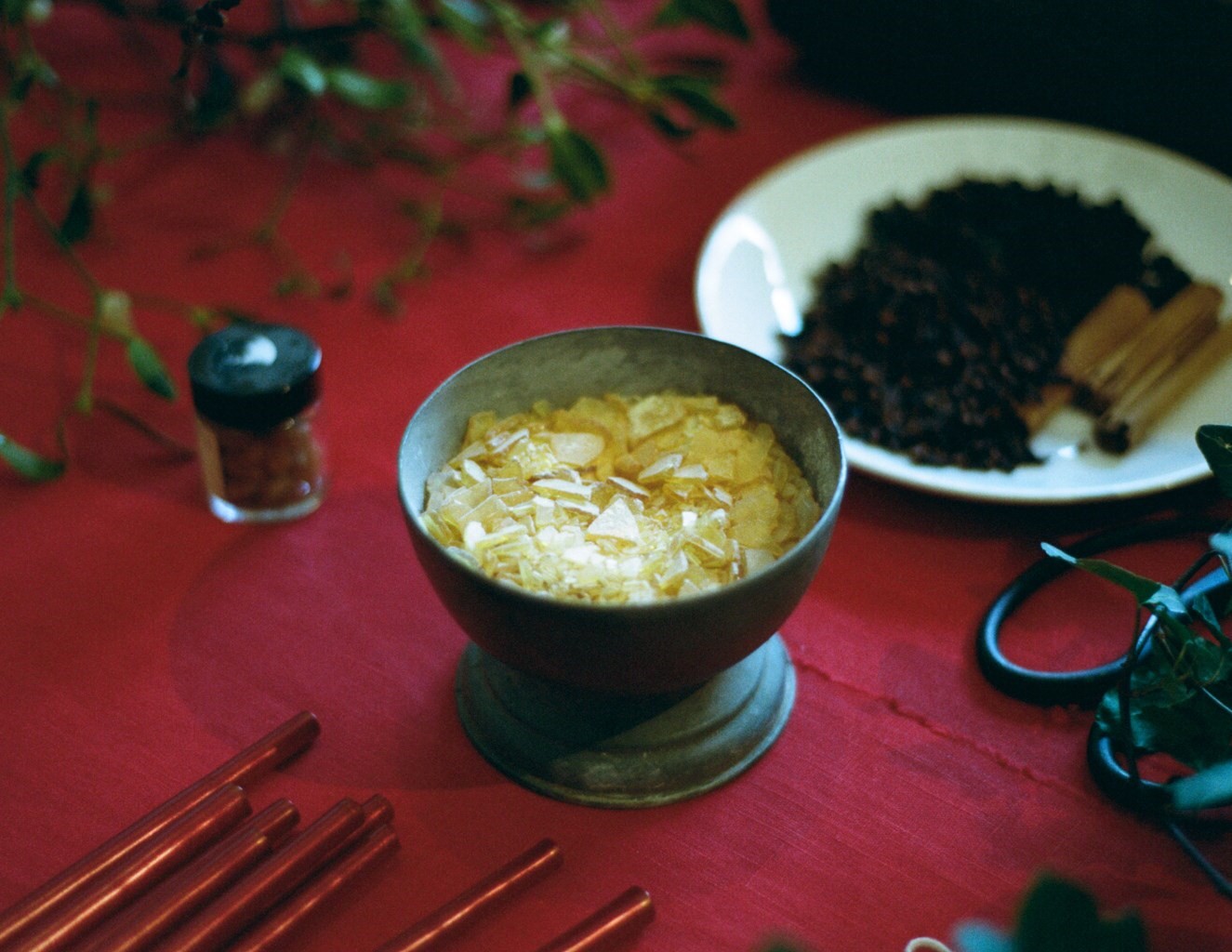
1. Gather your ingredients
Janina’s yule log requires the following items:
- One large log
- A drill
- Holly, ivy or any winter greenery such as mistletoe or juniper
- Mushrooms: Fly agaric if possible
- Wire, or a glue gun, for fastening elements to log
- Thin, wax dinner candles
- Cloves, cinnamon, myrrh, cloves, pine resin, frankincense, cinnamon sticks or any other seasonal essential oils
- Apples and pomegranates
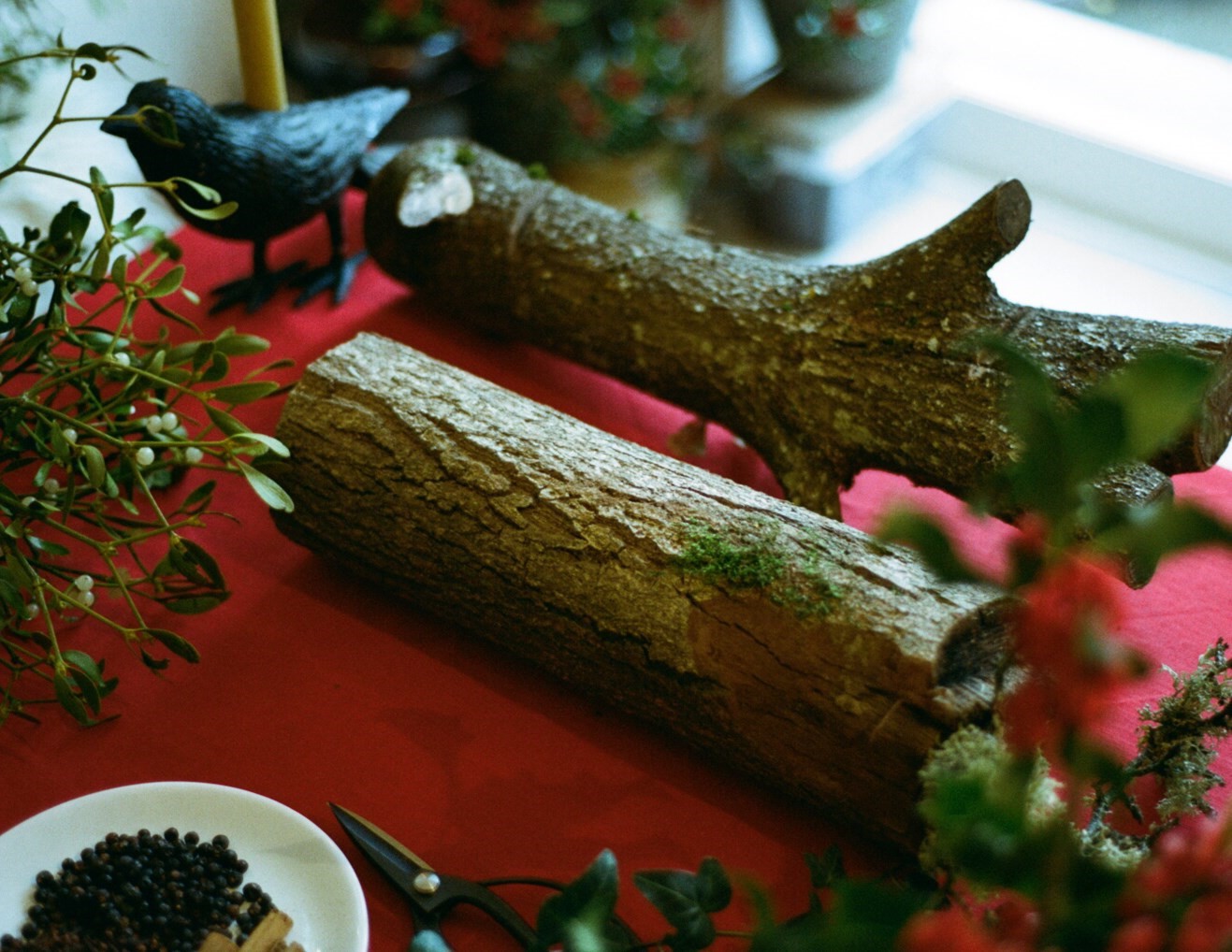
2. The Log
Go out and find a large, sturdy log. Janina found hers in a forest
“Traditionally, people would go out and try to find the biggest log they could – the yule log was supposed to last you for 12 nights, and to keep it burning for that long it would have had to have been really giant. This has to do with the occasion on which the pagan tradition was celebrated – on the winter solstice, the longest, darkest day of the year, on December 21. After decorating the log, you burn it as a celebration of the return of the sun. It’s a very cosmological celebration, which is one of the things that I find attractive about it. It is linked to Agrarian societies and their connection with nature, and so all of these elements of the log, in one way or another, have to do with that link to nature and what happens in the winter months.”
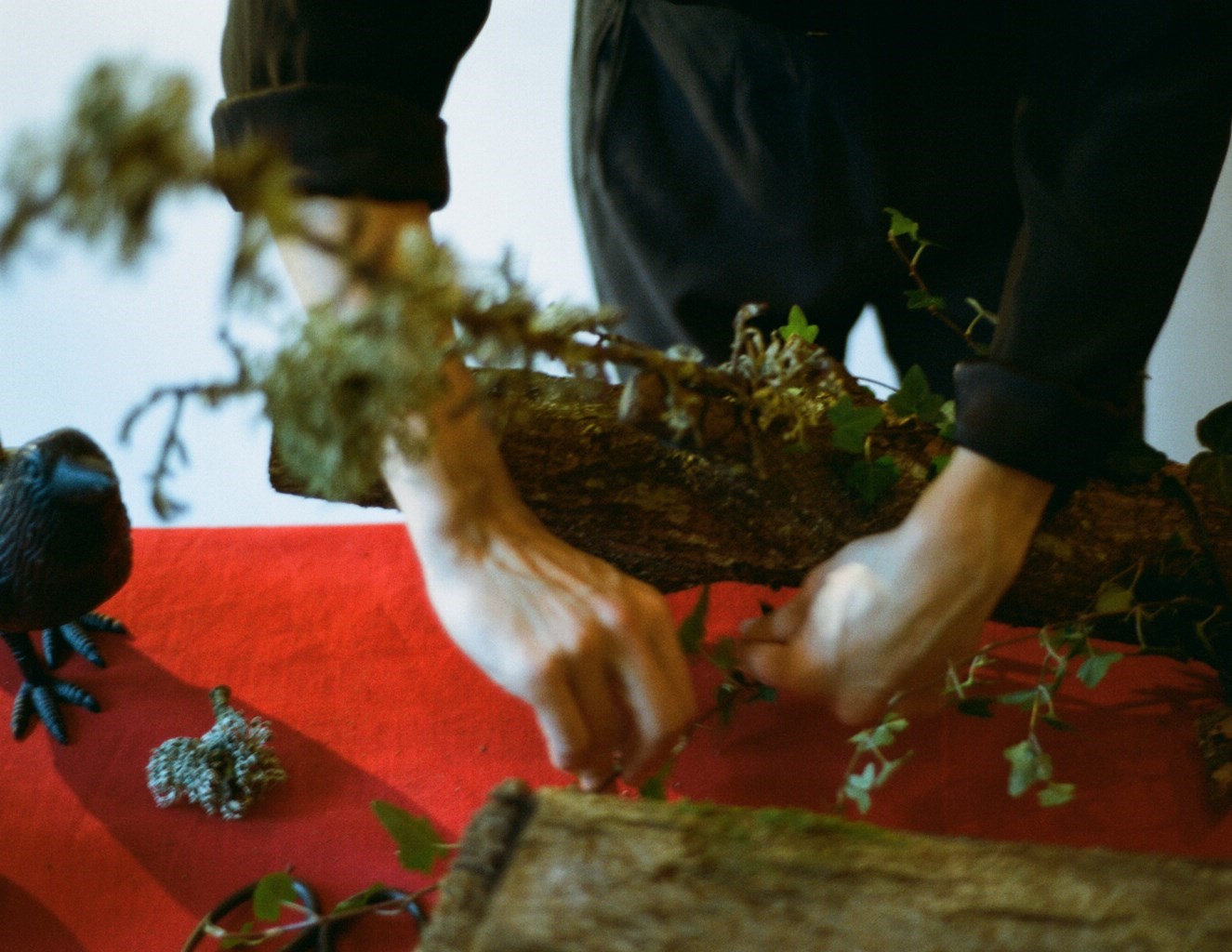
3. Greenery
Apply your greenery to the log using the wire or glue gun. Wrap around the log as you see fit
“The first element to be applied to the log is greenery, which is there to celebrate bearing fruit in winter – this applies to the pomegranate and the apples too – and to alleviate the month of darkness and cold. Before we celebrated Christmas, the Romans used to celebrate a week-long festival at the same time of year, called Saturnalia. For this festival they used both holly and ivy, which would represent Dionysus and celebrations. All of this greenery represents fertility in the midst of winter: everything has died off, and then you have these plants that spring from the gloom and carry fruit.
“Mistletoe is accepted now, but for a long time it was rejected by Christianity because it was too sexy. I guess it sort of still is. I think there was some vague symbolism about the berries being likened to male semen, or something like that. Mistletoe comes from a parasite that lives in fruit trees; it turns up and grows and exists in this space between heaven and earth, and then carries berries in the midst of winter, which people found very odd considering that everything else dies, and it’s the same with holly. So they both in one way or another represent fertility. The ivy represents the endless coil of eternity and the ability to maintain life within the winter months. All of these things play into the idea of the cycle, and the return of life.”
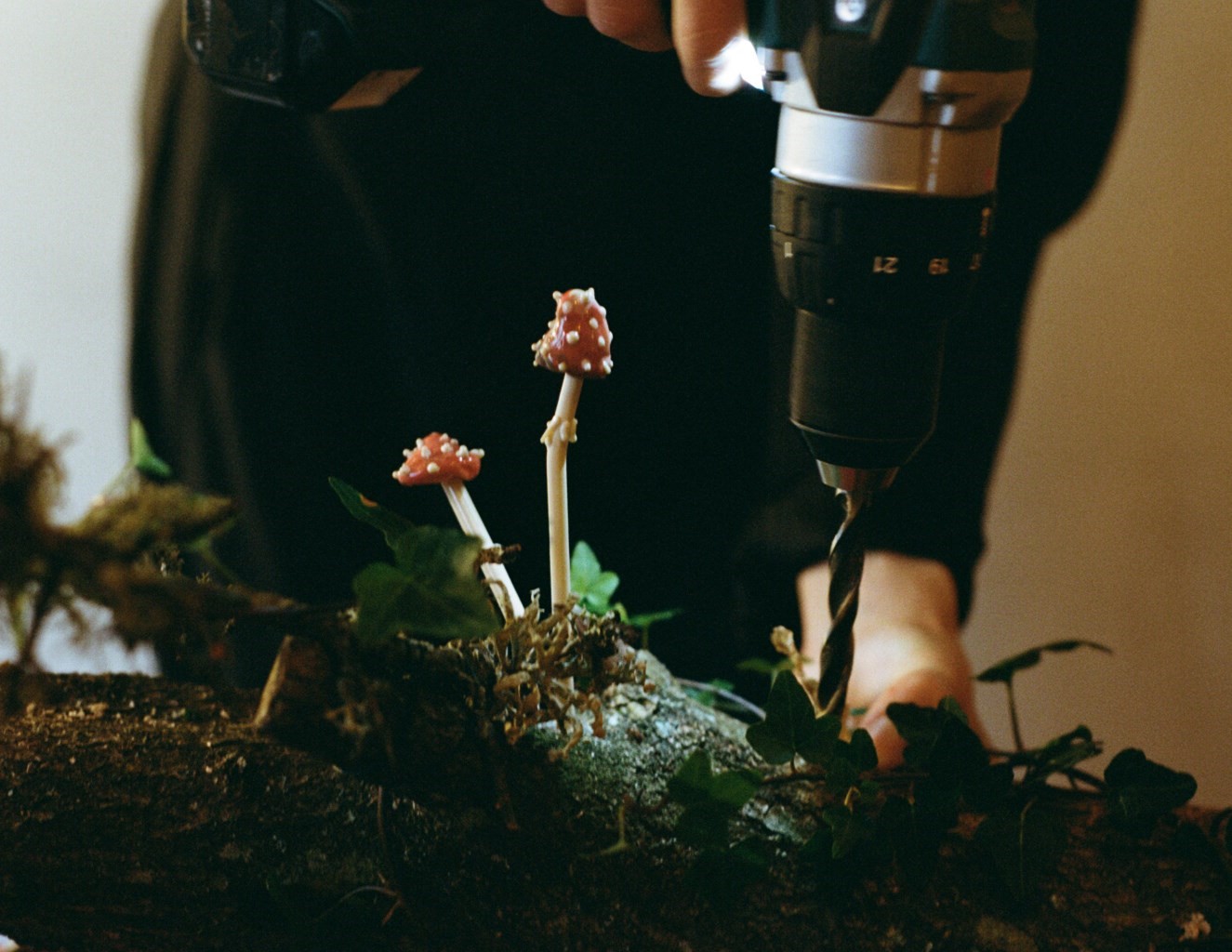
4. Candlelight
Drill small holes into the log and insert thin, upright dinner candles
“Candlelight is also part of the Saturnalia celebration during Roman times, in which they also gave each other presents such as candles and clay dolls, and it relates to the idea of creating light in the midst of the darkness. Aside from the Roman and Christian traditions, so many other groups and religions have festivals of light around this time of year. In the Bible it suggests that Jesus wasn’t born at this time of year, it was just something that has been chosen as a good time to celebrate Christ as a son of God, or as a representation of light, so it corresponded well with winter. So the lights are also all about the celebration of the light coming back, and the burning of the log is a representation of light in the darkness.”
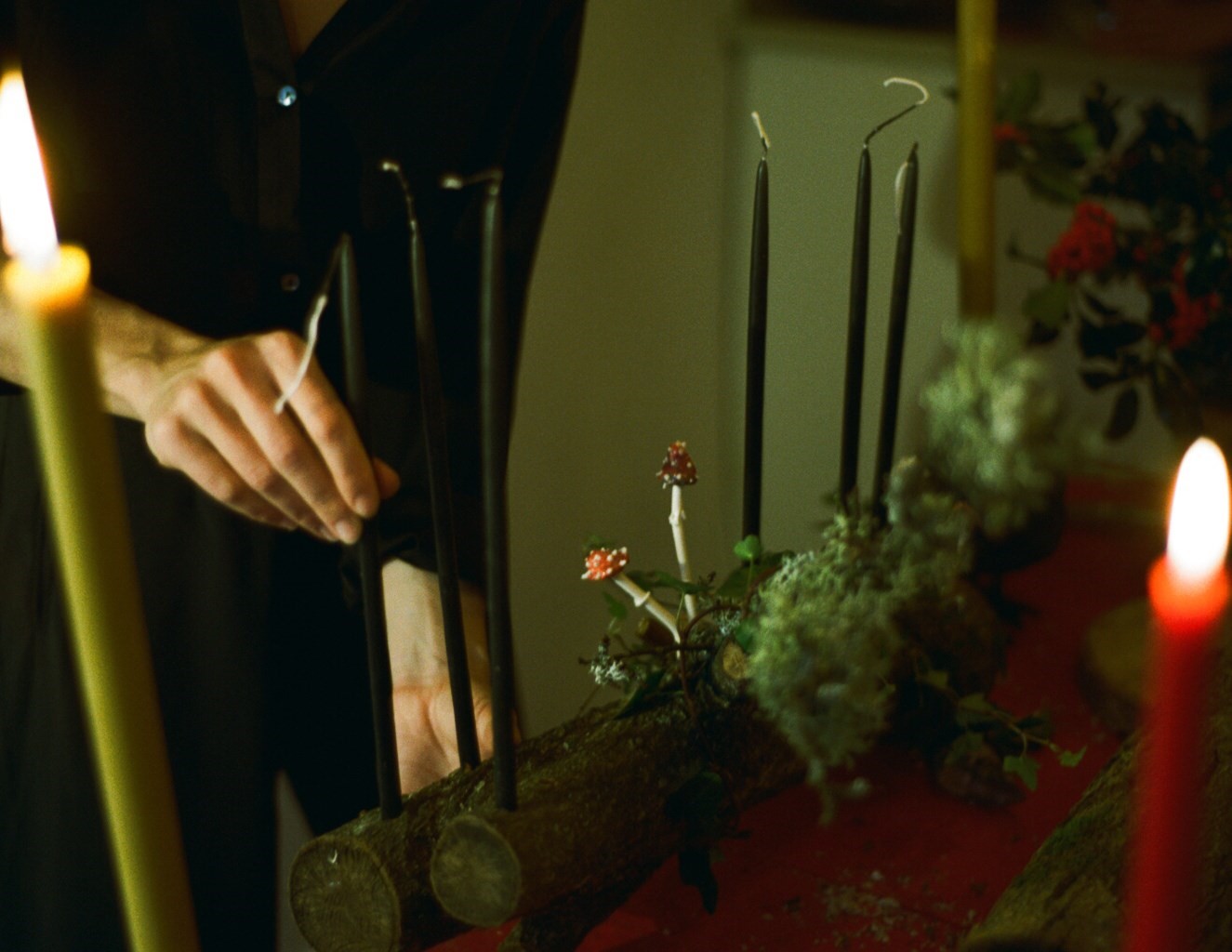
5. Incense
Rub the log with essential oils, insert cloves and cinnamon sticks into holes bored with a drill, and scatter other incense items over and around the log
“The whole point of the Yule Log is about using the smoke and the burning of the log as a way of warding off evil spirits to cleanse the house. It’s a form of smudging and that’s an idea that is really visible across all the different methods of celebrating Christmas: using scent as a means of ritualistically cleansing. Back in the day, they would have covered the log in ale; it wouldn’t have to be particularly fragrant, it would just have to smell nice. There are so many types of symbols that go into things they use: people make mixtures of herbs and things like that, you can burn the laurel, or juniper is a common thing to burn as a way of cleansing. You can crush up these things and brush them on – some of them won’t smell that much, it’s more the idea of adding the smells to the log.
I have some essential oils to apply to the log but they would only really be used for when it is an ornament in the house, before it is burnt, so that it smells nice. Then when you actually burn it you can put some of the resins on top of it too. The cloves and cinnamon sticks can be inserted into the log, the juniper berries can be used as decoration around it. Personally I am not sure about applying the cinnamon sticks as it makes the log look a little bit more like a… café decoration… but it’s up to you.”
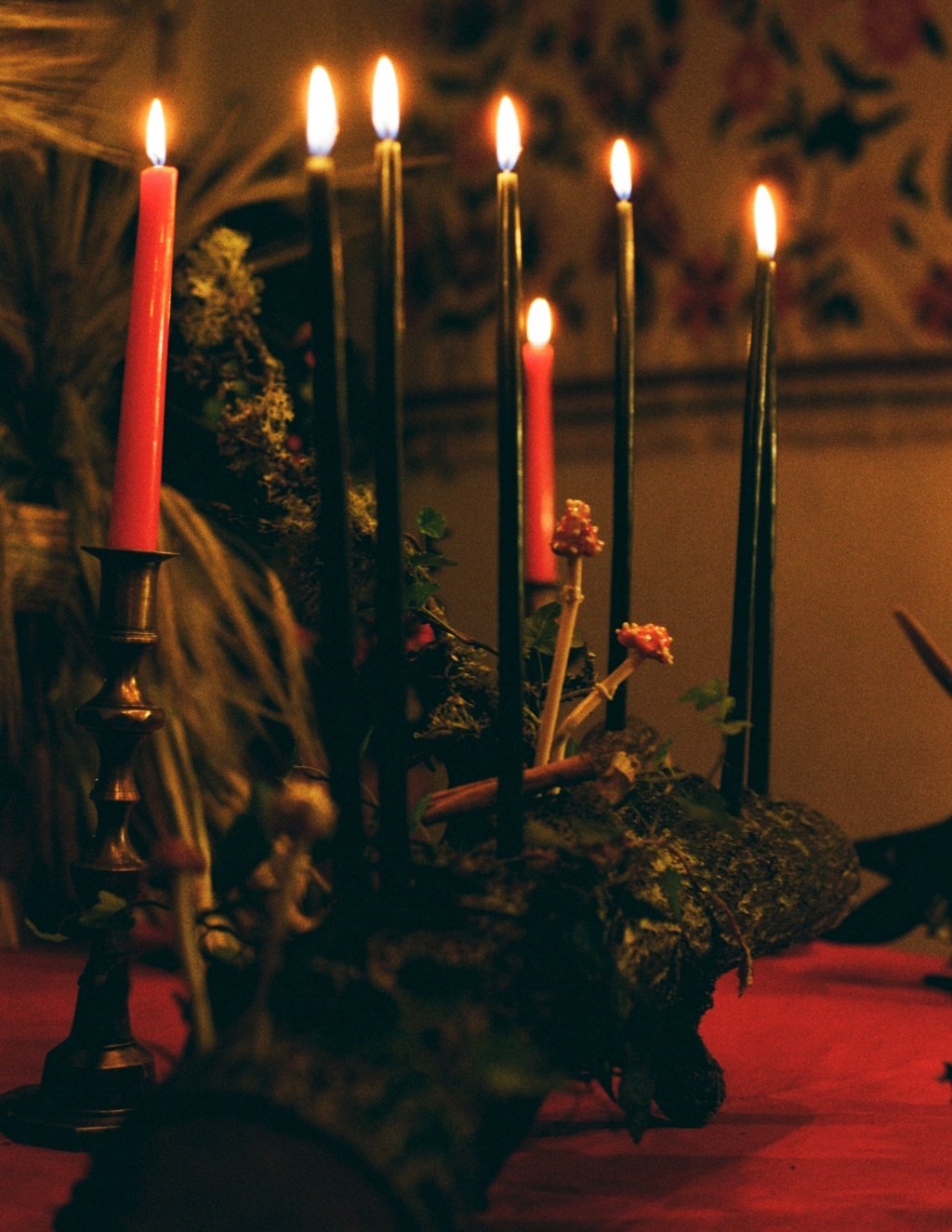
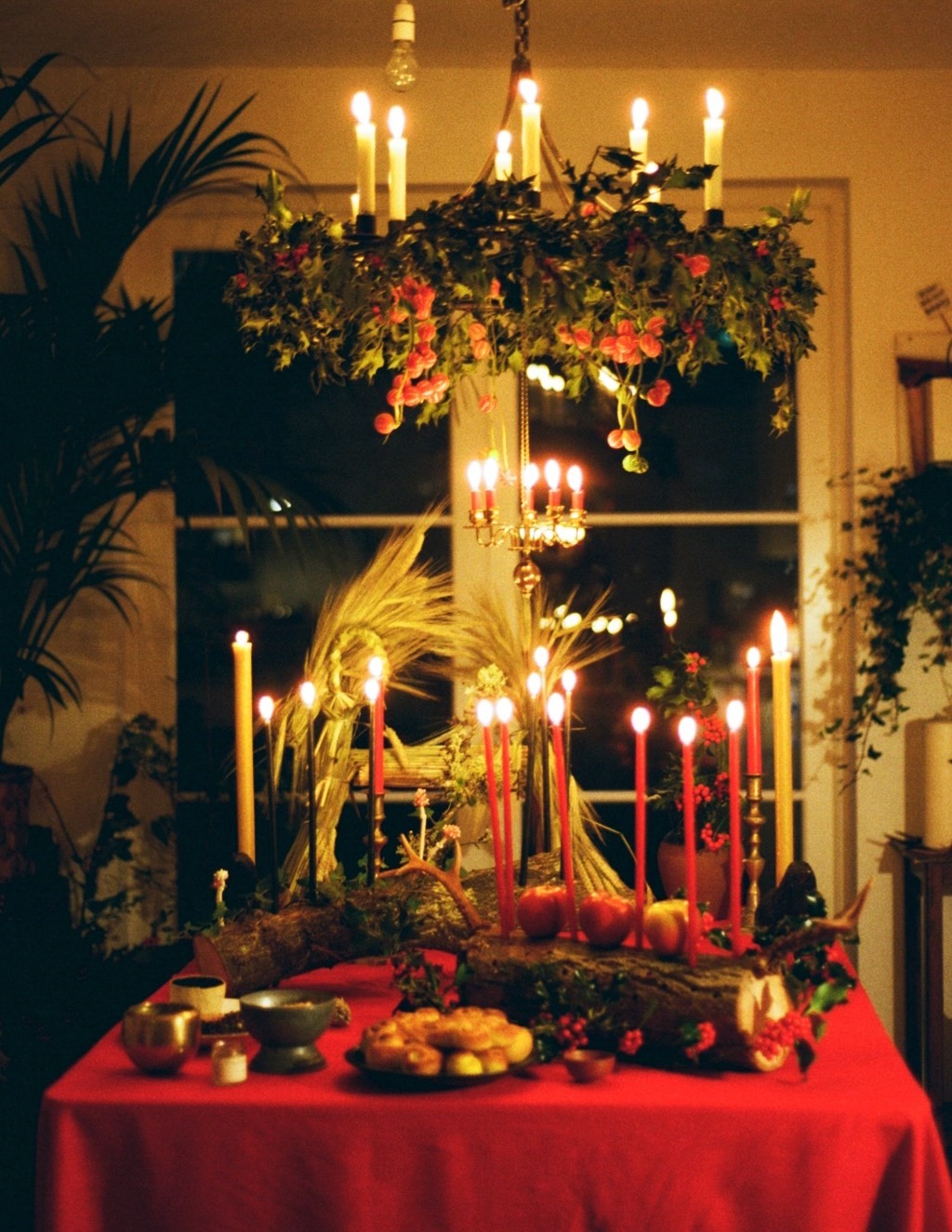
With thanks to Janina Pedan.
